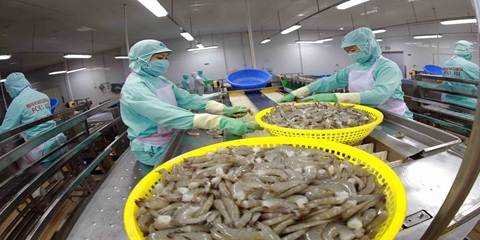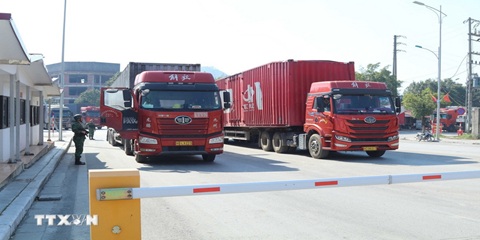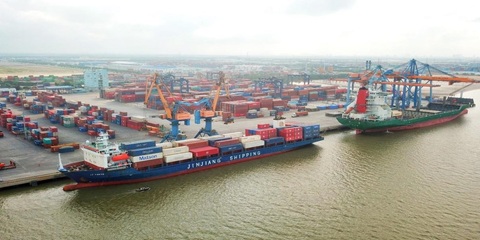Want to be in the loop?
subscribe to
our notification
Business News
HCM CITY TEXTILE, GARMENT AND FOOTWEAR INDUSTRIES FACE LABOUR SHORTAGE
HCM City is facing a serious shortage of labour in the textile and garment and footwear industries since many workers have been moving to others due to low incomes.
Thành Công Textile Garment Investment Trading JSC has been trying to hire workers to expand its production, but is struggling to do it since its salaries and bonuses are not considered high enough.
Nguyễn Hữu Tuấn, its human resource director, was quoted by VnExpress newspaper as saying workers do not consider the textile and garment industry attractive any more.
Many of the company’s workers have switched to other, higher paying jobs, while many are also moving out of the city due to rising expenses, he said.
“Finding new textile and garment workers is very difficult… The lack of workers is preventing factories from reaching their full production capacity. Production lines with new workers are also not productive since they are still inexperienced.”
Phan Thị Minh Thu, deputy director of Vĩnh Phong Footwear Co., Ltd., said the number of workers at its factory has dropped from over 1,000 to 300 in the last two years, and it is also having problems finding replacements.
The business is unable to get new customers since it lacks workers to take in new orders, she said.
Textile and garment and footwear, among Việt Nam’s most labour-intensive industries, are facing labour shortages after COVID amid high demand for goods, with some losing hundreds of workers every year.
In HCM City alone, the two industries have more than 20,000 new vacancies annually but can only find 1,000 in recent years.
Nguyễn Thị Thủy, deputy chairman of the Việt Nam Textile and Garment Labour Union, said businesses are getting plenty of new orders but lack labour, and so could only accept small orders.
Factories are struggling to employ young workers, while existing workers are usually well over 40 and could not find other jobs, she said.
“Businesses have been investing in new technologies to fulfil orders, but skilled staff to operate such machinery are also hard to come by.”
The textile and garment and footwear industries have high export revenues and contribute greatly to the economy, but in recent years universities and colleges have not been churning out enough graduates to meet their demand, she said.
Lê Duy Bình, CEO of economic development agency Economica Việt Nam, said there is a trend of workers leaving the two industries to pursue jobs in other well-paying industries such as electronics and tourism.
They would have to restructure and stop relying on cheap labour like now since that would no longer be available.
The current labour shortage would force them to focus more on production stages with high added value such as raw materials, designing and brand building, he said.
In 2021 HCM City had over 376,000 workers in the two industries, accounting for 13 per cent of the total number in the city.
Source: VNS
Related News

VIETNAM’S SEAFOOD EXPORTS HIT OVER US$10 BILLION IN JAN-NOV
Seafood export revenue in November alone amounted to nearly US$990 million, up 6.6% year-on-year. Key product groups posted solid gains. Shrimp exports rose 11.7% to over US$385 million, supported by strong demand for whiteleg shrimp and lobster. Tra fish shipments increased 9.7% to almost US$197 million, while marine fish, squid, and mollusk exports maintained their recovery.

VIETNAM’S AGRO-FORESTRY-FISHERY EXPORTS HIT NEW RECORD IN JAN-NOV
Vietnam’s agro-forestry-fishery export revenue reached an estimated US$64.01 billion in the first 11 months of 2025, up 12.6% year-on-year and surpassing the full-year record of US$62.4 billion set in 2024. Agricultural exports reached US$34.24 billion, up 15% year-on-year, while livestock products brought in US$567.4 million, a 16.8% increase. Seafood exports rose 13.2% to US$10.38 billion, and forestry products earned US$16.61 billion, up 5.9%.

HANOI REPORTS RECORD-HIGH BUDGET REVENUE IN 2025
Hanoi’s budget revenue is estimated to reach VND641.7 trillion in 2025, the highest level ever recorded and nearly 25% above the revised target, according to a report by the municipal government. Data from the city’s socioeconomic performance review shows that total state budget collections in 2025 are projected to reach 124.9% of the adjusted plan and rise 24.9% from 2024, the Vietnam News Agency reported.

VIETNAM, CHINA TO PILOT TWO-WAY CARGO TRANSPORT AT LANG SON BORDER
Vietnam and China will launch a one-year pilot program on December 10 to allow two-way cargo transport through the Huu Nghi–Youyi Guan international border gates in Lang Son Province, reported the Vietnam News Agency. The Dong Dang-Lang Son Economic Zone Management Board said the trial aims to reduce transport costs and improve customs clearance capacity.

VIETNAM’S IMPORT-EXPORT VALUE NEARS US$840 BILLION IN JAN-NOV
The total value of Vietnam’s imports and exports was nearly US$840 billion between January and November this year, the highest level ever recorded, according to the National Statistics Office. In its latest report on the country’s socio-economic performance, the National Statistics Office highlighted a series of positive economic indicators, with trade emerging as one of the strongest drivers of growth.

OVER 19 MILLION INTERNATIONAL VISITORS COME TO VIETNAM IN JAN-NOV
Vietnam received more than 19.1 million international visitors in the first 11 months of 2025, a 20.9% increase year-on-year and the highest level ever recorded, according to the National Statistics Office. The figure surpasses the full-year record of 18 million arrivals set in 2019, before the Covid-19 pandemic. Nearly two million foreign visitors arrived in November alone, up 14.2% from October and 15.6% from the same period last year.
























